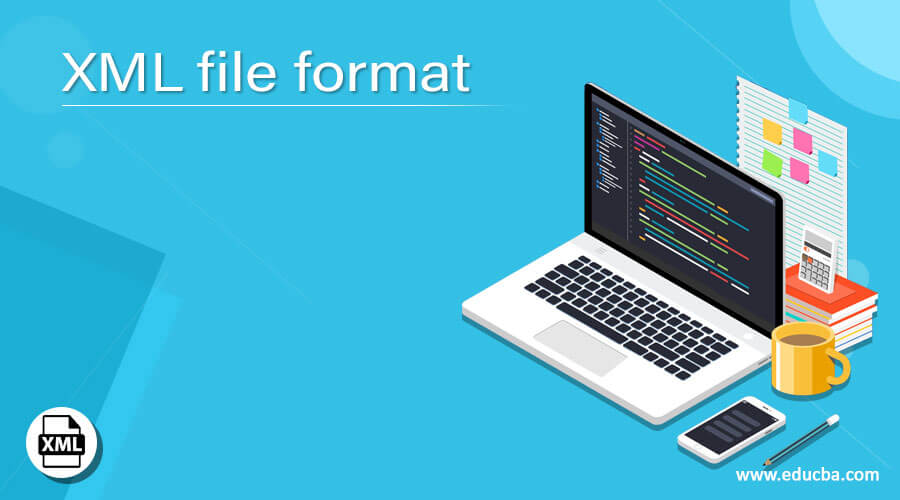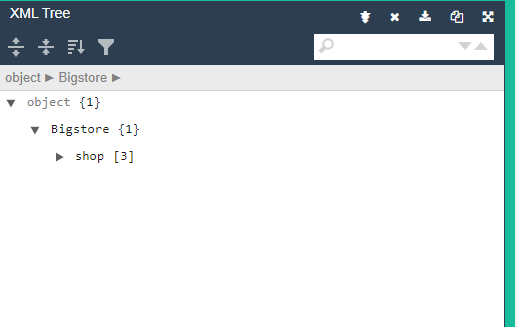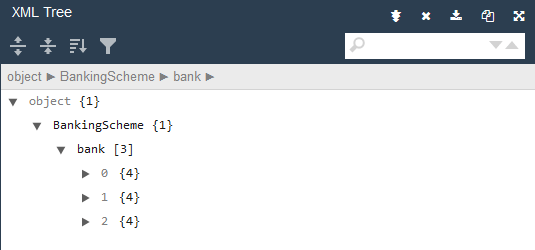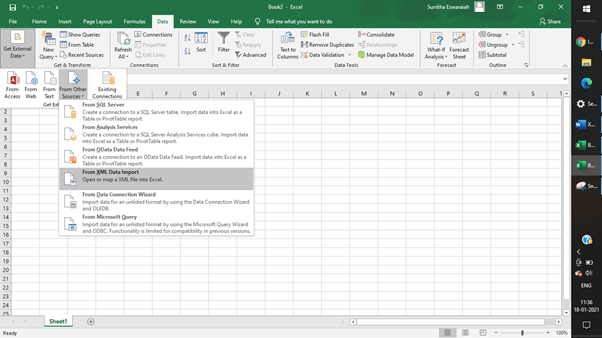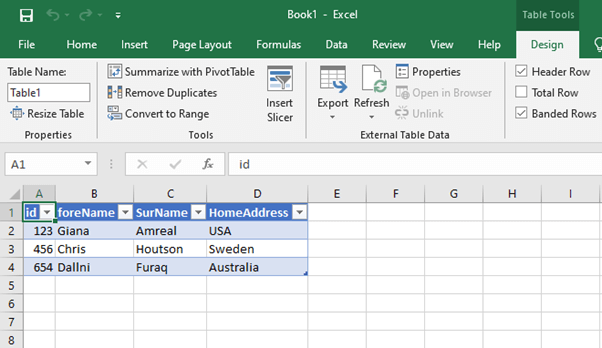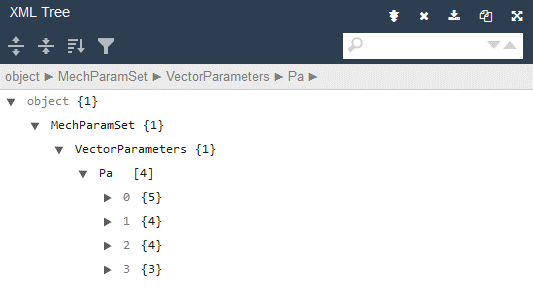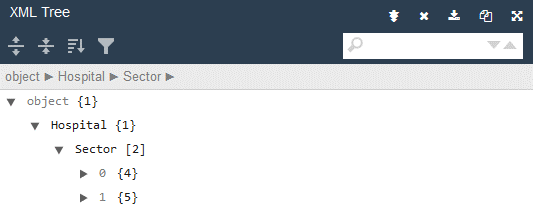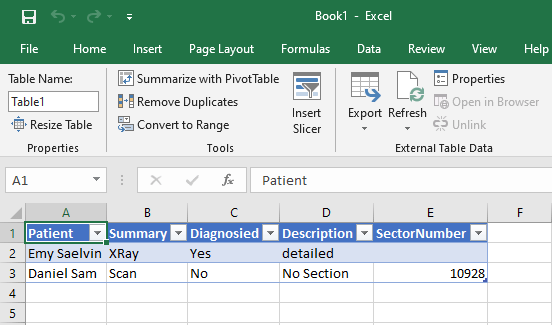Updated April 10, 2023
Introduction to XML file format
XML File format is a tool and is defined as an information exchanger and describes data and contains metadata. This tool converts the XML file into other formats like PDF or any other applications with few indention levels to give elegance to XML files. An XML file is structured formally and used for data files; meanwhile, XML files cannot be stored in a flat file. File format takes a role in defining a building block to match user needs. In XML, we could define a custom mark-up element and follow certain rules but don’t support and process buggy XML Documents.
Explain XML file format in detail
Generally, a file format is a standard way to store a file in a specific format. An XML file is a plain text document, and to identify them, it is stored at the file extension .xml. The XML file format is human or machine-readable and designed to transport data over the internet and could handle hundreds of records in the calculation. Most of the Programming languages use XML Libraries that do the work of the parsing. The process of converting XML files to other needed formats is termed down-converting. XML is used as a format for other description languages like RSS, DOCX format, XSL, Microsoft dotnet. This XML file could be opened directly with the text editor, notepad++. There is a variety of File organizations to handle the file types; we need a few conversations between them. XML is merely an organization needed for data and web pages. Next, to view a file on occasion, double-clicking the browser (default viewer of the file) may be done.XML file format contains three categories.
- Section one with Document Identification
- The Document Content
- Meta Data with fields and Facets.
The structure component is simply represented by an element associated with the attributes. Section one document structure performs to have different styles. The document identification includes a root element which is the primary part of an XML document. Developers need to transform binary files into XML format. The new file format is explained below, called office open formats. Here we are creating an open document and providing an implementation for the specified format. The main Objective is the format should be accepted by all the official documents like Spreadsheet, the presentation also allowing regain ownership to the users. It is specified as
- XML file Format Specification
- DTD File Format
The XML code is represented as
<office:document>
This document type has sub-documents with characteristics like class and version.
Document Body is given as
<office: body>
With fields and data caught up with styles and forms
<office:document>
<office:meta>
<office:styles>
…// style structures including family , automatic and parent styles
</office:styles>
On forms
<office:forms>
A simple example of XML Format is given below
<DOCSET NAME=” ”>
<FIELD NAME=” hdhsd” > xxxxx</FIELD>
GROUP NAME =” ” NAME=”DOCNAME “
<FORM NAME =” hhhhh”>
<FIELD NAME >
< SECTION NAME =”jjdscj”>
For Multiple Page sections, DAP OPTIONs is applicable in XML. Various file formats have been used to form this tree-like structure to embed the files XHTML, SVG.
The format for the XML file, in general, is given below for tags and data
Tags are formatted as
<Tag>
<Tagname> password</Tagname>
<Description> Strong Length </Description>
</Tag>
Next messages are defined as
<MessageList>
<Data>
<Stamp> 1:00:13 </Stamp>
</MessageList>
XML being a data storage plays a vital role in database communication particularly in a small set of the application.XMLs simple nature allows the file format helps to expand serializing object contents. For example, Manifold writes their information in a .xml file while they export their drawings and images. This file format contains all the information in the metadata.
<?xml version="1.0" encoding="UTF-8"?>
<info>
<Co-Sytem>
// Description tags
</Co-System></info>
Note:
The extensible Style sheet can be used if the Xml uses different Formats while importing a file.
Examples
This section covers how to Structure an XML file and letting them execute in an XML Formatter which is available online.
Example #1
<?xml version="1.0" encoding="UTF-8"?>
<Bigstore>
<shop category="HouseHold">
<Model lang="en">HD3352</Model>
<Company>Samsung</Company>
<year>2014</year>
<ownat>120.00</ownat>
</shop>
<shop category="HouseHold">
<Model lang="en">JH3648</Model>
<Company>Redmi</Company>
<year>2016</year>
<ownat>110.00</ownat>
</shop>
<shop category="HouseHold">
<Model lang="en">OKH8234</Model>
<Company>Ziami</Company>
<year>2012</year>
<ownat>130.00</ownat>
</shop>
</Bigstore>
Explanation:
A Simple XML file in Different file formats is done in the Online Formatter; therefore, the output is shown as a Binary tree Structure.
Output:
Example #2
Using Excel- Easy to Import into tables
Bank.xml:
<BankingScheme>
<bank id="321">
<foreName>George</foreName>
<SurName>Amreal</SurName>
<HomeAddress>Texas</HomeAddress>
</bank>
<bank id="541">
<foreName>Alex</foreName>
<SurName>Houtson</SurName>
<HomeAddress>Sweden</HomeAddress>
</bank>
<bank id="125">
<foreName>Dally</foreName>
<SurName>Furaq</SurName>
<HomeAddress>Australia</HomeAddress>
</bank>
</BankingScheme>
Explanation:
Above code, Snippet explains about the Banking credentials. In this example, the file Format is Imported into Excel Sheet. The First snapshot shows how to import XML files through Excel(External Source). Next, Snapshot shows how the XML data are stored in a friendly table.
Output:
Example #3
XML file format for Sensor Values
Measure.xml:
<?xml version="1.0" encoding="UTF-8"?>
<MechParamSet>
<VectorParameters>
<Pa Name="Force">
<Unit>Kgms-2</Unit>
<Measuring Type="Range">
<Max>24.5</Max>
<Min>36</Min>
</Measuring>
<Accurate>2.4e-06</Accurate>
<Explanation>This is a common value used in Physics</Explanation>
</Pa>
<Pa Name="Pressure">
<Unit> kgm-1 s-2 </Unit>
<DataType>Float</DataType>
<Value>53.4</Value>
</Pa>
<Pa Name="Probability">
<Type>Float</Type>
<Measuring Type="Enumeration">
<EnElement>Oval</EnElement>
<EnElement>Circle</EnElement>
<EnElement>Green</EnElement>
</Measuring>
<Privacy>Open</Privacy>
</Pa>
<Pa Name="Descrete">
<Unit>No unit</Unit>
<Accurate>1.01e-06</Accurate>
</Pa>
</VectorParameters>
</MechParamSet>
Explanation:
The above code creates science parameters used in Mechanical calculation. The result is shown.
Output:
Example #4
<?xml version="1.0"?>
<Hospital>
<Sector>
<Patient>Emy Saelvin</Patient>
<Summary>XRay</Summary>
<Diagnosied>Yes</Diagnosied>
<Description> detailed</Description>
</Sector>
<Sector>
<SectorNumber>10928</SectorNumber>
<Patient>Daniel Sam</Patient>
<Summary>Scan</Summary>
<Diagnosied>No</Diagnosied>
<Description> No Section</Description>
</Sector>
</Hospital>
Explanation:
The Above Hospital Management code is imported into Excel Sheet by XML. XML is used well in data structures format, especially web services.
Output:
Conclusion
Thus, any application developer must be aware of File Formats to challenge in real life. In Recent technology, numerous developers require a few professional Workplace in such a case, XML files helps to direct a technically developed workplace. So, XML file formats are very easy to handle and in structure, helping to transform and in conversion to various file formats. There are few XML tools packages available in the market to import and export XML files in various applications.
Recommended Articles
This is a guide to XML file format. Here we discuss the Explanation of the XML file format in detail along with the Examples and Outputs. You may also have a look at the following articles to learn more –

